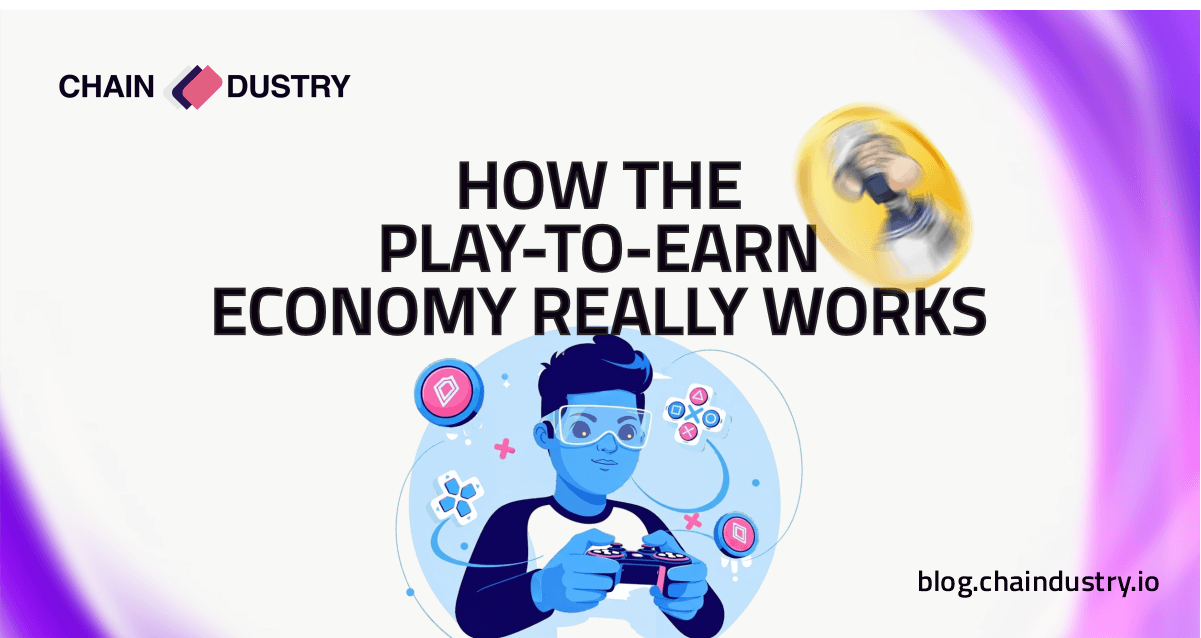Introduction
For decades, gamers poured hours into their favorite titles only to leave with nothing but memories and maybe a few achievements on screen. In 2025, that’s changing. Thanks to NFTs and play-to-earn (P2E) mechanics, gamers can now turn their skills and time into real value.
Whether it’s earning in-game assets, reselling characters, or staking rewards inside gaming ecosystems, NFTs are giving players a financial stake in the worlds they love.
Why NFTs in Gaming Are a Big Deal
In traditional games, you might spend hundreds of dollars on skins, weapons, or upgrades but you never truly own them. They’re locked inside the publisher’s servers, and if the game shuts down, your items vanish.
NFTs flip this model:
1.You actually own in-game assets. Your sword, skin, or plot of land lives in your wallet, not the publisher’s database.
2.You can trade or resell them. Just like flipping rare sneakers, gamers can profit by reselling rare items.
3.You can earn while playing. Tokens and NFTs gained in gameplay have real-world value.
This shift means your hours grinding in-game are no longer wasted, they can become a side hustle.
How the Play-to-Earn Economy Really Works

The P2E economy is built on a few simple layers:
1. Game Assets as NFTs → Every character, skin, or item is tokenized.
2. Marketplaces → Players trade these NFTs for tokens or stablecoins.
3. Earnings Models → Players earn by winning battles, completing quests, or even renting assets to others.
4. Token Utility → Native game tokens can be staked, swapped, or cashed out into real-world money.
Example: In Axie Infinity’s early boom, some players in the Philippines reported making more than the average monthly wage just by breeding and battling Axies. While that hype cooled, newer games like Illuvium, Big Time, and Parallel are building more sustainable models where gameplay fun comes first, and earning is an added bonus
The lesson? The play-to-earn economy is real, but it works best when paired with strong gameplay and real communities.
The Best NFT Games Right Now
Some of the most talked-about NFT-powered games in 2025 include:
Illuvium – A polished RPG where monsters are NFTs.
Parallel – A sci-fi card game with tradable NFT decks.
Big Time – A multiplayer action RPG with tokenized loot.
Gods Unchained – One of the longest-running NFT trading card games.
Each combines fun gameplay with real asset ownership, something traditional gaming never offered.
Risks Gamers Should Know
Of course, it’s not all smooth sailing:
-
Speculation can make assets overpriced. Some NFTs may never regain their value.
-
Game shutdowns still matter. If no one plays, your NFTs lose demand.
-
Token inflation can kill economies. Too many rewards, not enough players = price crash.
The best advice? Play games you actually enjoy. Treat the money as a bonus, not the whole point.
Conclusion
NFT gaming isn’t about replacing fun with finance, it’s about merging the two. For the first time, gamers can truly own what they earn, trade what they’ve built, and turn their time into value.
In 2025, the play-to-earn model is no longer a buzzword, it’s a movement that’s reshaping gaming itself.
